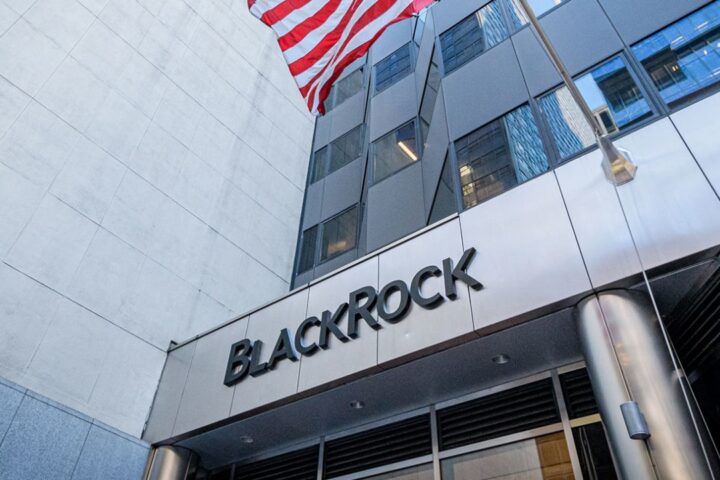Blockchain-powered prediction market Polymarket is reportedly gearing up for a return to the United States, with investors suggesting its valuation could soar as high as $10 billion.
The development underscores a surge of enthusiasm around decentralized prediction markets and the broader crypto sector.
From $1 Billion to $10 Billion?
According to sources cited by Business Insider, Polymarket is actively exploring a US comeback while pursuing a new funding round.
The latest financing effort could more than triple the company’s valuation since June, when it was pegged at $1 billion.
One investor has already priced Polymarket at up to $10 billion, reflecting heightened expectations for the company’s growth.
Back in June, the firm raised $200 million in a round led by Peter Thiel’s Founders Fund, a venture capital powerhouse known for its early bets on OpenAI, Paxos, and Palantir.
Political Forecasting Boosts Growth
Polymarket rose to prominence during the 2024 US presidential election, when its trading activity surged.
The platform’s prediction markets gained credibility after accurately anticipating Donald Trump’s victory, attracting significant attention from traders and the media alike.
Data from analytics platform Dune shows that user activity reached record levels during the election period, with monthly active traders climbing rapidly.
Navigating CFTC Challenges
Despite its popularity, Polymarket was barred from operating in the US in 2022 after settling with the Commodity Futures Trading Commission (CFTC).
That setback pushed the company to focus on international users while it sought a pathway back into the American market.
In July, Polymarket took a key step forward by acquiring Florida-based derivatives exchange QCX.
This move provided a regulatory foothold in the US and positioned the company for compliance.
The CFTC followed up in September with a no-action letter granting QCX relief from certain reporting and recordkeeping requirements for event contracts.
CEO Shayne Coplan welcomed the decision, saying it effectively gave Polymarket “the green light to go live in the USA.”
Rival Platforms Also Expanding
Polymarket’s renewed push comes at a time of intensifying competition.
Rival platform Kalshi has been making headlines of its own, reportedly working toward a $5 billion valuation through a new funding round.
Earlier this year, Paradigm led a $185 million raise for Kalshi, which was valued at $2 billion at the time.
Kalshi’s momentum was helped by a 2024 court ruling that allowed it to list political-event contracts, a move that survived a CFTC appeal.
The legal victory cemented its ability to offer politically themed markets under existing US regulations.
A Growing Market for Predictions
Market analysts note that both Polymarket and Kalshi remain among the most active prediction platforms, though user activity has tapered since the election.
Still, fresh momentum is emerging.
The kickoff of the National Football League season has driven significant volumes, with analyst Tarek Mansour pointing out that Kalshi alone processed $441 million since Week 1.
He wrote, “NFL Week 1 is equal to a US election,” underscoring how sports markets are filling the gap left by election cycles.
For Polymarket, the combination of regulatory progress, strong investor interest, and proven user demand could make its US return one of the most closely watched moves in the crypto sector this year.
The U.S. Securities and Exchange Commission (SEC) has once again delayed rulings on a wave of cryptocurrency exchange-traded fund (ETF) proposals, adding to an already crowded pipeline of pending applications.
New Deadlines Set for Proposals
In fresh filings this week, the SEC extended deadlines for funds tied to Ethereum, Solana, and XRP.
Franklin Templeton’s Ethereum staking amendment is now set for a decision by November 13, while its Solana and XRP ETF proposals face a November 14 deadline.
Meanwhile, BlackRock’s bid to allow staking in its iShares Ethereum Trust has been pushed to October 30.
The filings only confirm the delays and do not signal how the SEC may ultimately rule. The Commission is using the maximum time permitted before a final decision.
SEC’s Changing Approach to Crypto
The extensions come as the SEC attempts to redefine its approach to digital assets under Chair Paul Atkins.
Since President Donald Trump’s administration began in January, the agency has taken a more open stance, introducing “Project Crypto” to modernize securities rules and create a unified framework for digital asset trading, lending, and staking.
At a global finance roundtable in Paris this week, Atkins underscored the shift. “Crypto’s time has come,” he told delegates.
ETF Applications Continue to Mount
Despite the more pro-crypto rhetoric, ETF decisions remain in limbo.
On Tuesday, the SEC postponed reviews of the Bitwise Dogecoin ETF and the Grayscale Hedera ETF, pushing both deadlines to November 12.
The Commission also issued multiple extensions in August, covering filings for the Truth Social Bitcoin and Ethereum ETF, the 21Shares and Bitwise Solana ETFs, and the 21Shares Core XRP Trust.
Other pending proposals include WisdomTree’s XRP Fund and the Canary PENGU ETF, both delayed until October.
By late August, reports indicated that at least 92 crypto-related ETF applications were sitting with the regulator.
The backlog highlights the SEC’s struggle to balance political momentum, market demand, and regulatory caution in one of the fastest-growing corners of finance.
Cboe Global Markets has announced plans to launch continuous futures contracts for Bitcoin (BTC) and Ether (ETH), bringing a popular decentralized finance (DeFi) product into US markets for the first time.
The exchange operator, which is part of the Chicago Board Options Exchange, said on Tuesday that the contracts are scheduled to begin trading on November 10, pending regulatory review.
Unlike standard futures that require traders to roll their positions into new contracts as they expire, continuous futures will provide long-dated exposure with a 10-year expiration period. This structure is designed to reduce the need for constant position management, a challenge that often deters traditional investors from crypto markets.
Perpetual-Style Contracts for Regulated Markets
Cboe explained that the product will function similarly to perpetual contracts, which have become a dominant form of crypto trading in offshore and DeFi markets due to their lack of expiry dates.
The contracts will be cash-settled and aligned to spot prices through transparent funding mechanisms.
“Perpetual-style futures have gained strong adoption in offshore markets. Now, Cboe is bringing that same utility to our US-regulated futures exchange,” said Catherine Clay, Global Head of Derivatives at Cboe.
Growing Appetite for Perpetuals
Perpetual contracts currently dominate Bitcoin derivatives markets. Research from Kaiko indicates they account for 68% of Bitcoin’s total trading volume in 2025, reflecting widespread trader preference for this format.
CoinMarketCap data shows open interest in perpetual futures has reached $876 billion this year, underscoring their role in driving liquidity and leverage.
By introducing continuous futures, Cboe hopes to attract US traders who have previously turned to offshore exchanges for these products.
A Return to Crypto Expansion
This launch marks a significant step for Cboe, which first introduced Bitcoin futures in 2017 but later scaled back its crypto derivatives efforts.
The renewed push follows a friendlier regulatory environment under the Trump administration, with US agencies showing greater openness to new crypto products.
Other US platforms have already made moves. Bitnomial launched perpetual futures in April, becoming the first exchange to do so under US oversight. Coinbase followed in July with nano Bitcoin and Ether perpetual futures, expanding its offerings to retail-focused traders.
Cboe’s entry into the space suggests growing competition and regulatory acceptance for products that bridge traditional finance with digital assets.
SwissBorg has revealed that hackers drained nearly $41 million worth of Solana (SOL) tokens from its Earn program after exploiting a vulnerability in Kiln’s staking API.
The Switzerland-based crypto wealth management firm confirmed the incident on X, clarifying that the breach was isolated to its Solana Earn product. Other services, including its main app and additional Earn programs, were unaffected.
The stolen funds amount to roughly 193,000 SOL, according to blockchain records. The exploit highlights once again the vulnerabilities that arise when relying on third-party staking infrastructure.
API Weakness at the Center
The source of the breach was traced back to Kiln, SwissBorg’s staking partner that supports yield-generating products on networks such as Solana and Ethereum.
An API, or application programming interface, functions as the bridge that connects two systems. By exploiting this communication channel, attackers were able to manipulate requests and redirect funds away from user deposits.
Blockchain data later flagged the compromised wallet on Solscan as the “SwissBorg Exploiter,” cautioning users not to interact with it.
Company Response and User Protection
Despite the large sum lost, SwissBorg stressed that the hack has not threatened its financial position or overall operations.
CEO Cyrus Fazel addressed users directly during an X Space shortly after the news broke. He confirmed the breach only affected Solana deposits in the Earn program, which accounts for just 1% of the company’s user base and around 2% of its assets.
“It’s a big amount of money, but it doesn’t put SwissBorg at risk,” a spokesperson added.
SwissBorg assured customers that affected deposits would be reimbursed, saying that its treasury could cover losses immediately if necessary. The company is also collaborating with global authorities, crypto exchanges, and white-hat hackers to track down the attackers, and has already succeeded in blocking some related transactions.
A Learning Experience for SwissBorg
Calling the incident “a bad day for SwissBorg,” Fazel said it would ultimately serve as a critical learning moment for the platform.
The Earn program had been designed to simplify staking for retail investors, letting them earn rewards without setting up validators or engaging with complex DeFi protocols. By outsourcing infrastructure to Kiln, SwissBorg streamlined access but also inherited new risks.
The company now faces the challenge of tightening security while maintaining accessibility for users seeking passive income through staking.
Bitcoin’s recent rally to new all-time highs has been met with heavy selling from long-term holders, raising concerns among analysts that the cryptocurrency could face a deeper correction in the weeks ahead.
Data shows that investors who typically hold Bitcoin for six months or longer have sold more than 241,000 BTC in the past month, worth an estimated $26.8 billion at current prices.
Long-Term Holders Exit Positions
According to CryptoQuant analyst Maartunn, the 30-day rolling supply change for long-term holders (LTHs) has dropped significantly.
“That’s one of the largest drawdowns since early 2025,” Maartunn noted in a recent update.
The selling coincides with Bitcoin reaching an all-time high above $124,500 in August, prompting many seasoned investors to take profits.
Large investors, often referred to as whales, have also added to the pressure by unloading more than 115,000 BTC over the same period.
This trend has compounded the selling pressure and could weigh further on the market.
Institutional Demand Slows
Despite treasury companies now holding a record 1 million BTC, their pace of accumulation has slowed sharply.
Strategy, one of the largest corporate Bitcoin buyers, reduced its purchases from 134,000 BTC in November 2024 to just 3,700 BTC in August 2025.
Other companies also scaled back, acquiring only 14,800 BTC in August compared with 66,000 BTC in June.
CryptoQuant said August purchases fell below 2025 averages of 26,000 BTC for Strategy and 24,000 BTC for other firms.
“Smaller, cautious transactions show institutional demand is weakening,” the firm’s Weekly Crypto Report stated.
Charles Edwards, founder of Capriole Investments, added that the number of companies buying Bitcoin daily has also fallen, a potential sign of “exhausted” institutional interest.
Price Correction and Bear Flag Concerns
The price of Bitcoin has reflected this slowdown.
After peaking at $124,500 on August 16, Bitcoin slid 14% to a seven-week low of $107,500 by the end of the month.
It has since recovered to around $111,500 but remains under pressure.
Chart analysts note that Bitcoin has formed a bear flag pattern on the daily timeframe.
The cryptocurrency recently dropped below the flag’s lower boundary at $112,000, which also aligns with its 100-day simple moving average.
Failure to turn this level into support could see prices fall toward $95,500, marking a potential 14.5% decline from current levels.
Macro Outlook Still Supportive
Not all analysts are bearish.
X user Coin Signals pointed out that the current 13% pullback from the record high is relatively shallow compared with previous drawdowns.
Some forecasts suggest that Bitcoin could still dip below $90,000, but the broader trajectory remains pointed toward new highs in the longer term.
A 30% decline from the August peak would place the bottom around $87,000, which coincides with the realized price for holders who bought within the last six to 12 months.
That level could act as a strong support zone if the sell-off deepens.
For now, the market remains caught between profit-taking from experienced holders and cautious institutional demand on one side, and a still-optimistic long-term outlook on the other.
Tether CEO Paolo Ardoino has dismissed rumors that the stablecoin issuer is selling its Bitcoin holdings to buy gold.
In a Sunday post on X, Ardoino confirmed that the company “didn’t sell any Bitcoin” and reiterated its strategy of allocating profits into assets such as Bitcoin, gold, and land.
The comments addressed speculation by YouTuber Clive Thompson, who cited Tether’s Q1 and Q2 2025 attestation data from BDO.
Thompson suggested a reduction in Tether’s BTC holdings from 92,650 in Q1 to 83,274 in Q2 indicated a sell-off.
However, Samson Mow, CEO of Jan3, clarified that the apparent decline was due to Tether transferring 19,800 BTC to a separate initiative called Twenty One Capital (XXI).
This transfer included 14,000 BTC in June and another 5,800 BTC in July, meaning Tether’s net Bitcoin holdings actually increased when accounted for.
In early June, Tether moved more than 37,000 BTC, valued at around $3.9 billion, to support XXI, a Bitcoin-native financial platform led by Strike CEO Jack Mallers.
“Tether would have had 4,624 BTC more than at the end of Q1 if the transfer is accounted for,” Mow explained.
Ardoino emphasized that the Bitcoin was moved, not sold, adding, “While the world continues to get darker, Tether will continue to invest part of its profits into safe assets.”
Tether, which issues the USDT stablecoin, now holds over 100,521 BTC, valued at approximately $11.17 billion according to BitcoinTreasuries.NET.
El Salvador Diversifies into Gold
Tether’s Bitcoin rumors coincided with El Salvador announcing its first gold acquisition since 1990.
The Central American nation added 13,999 troy ounces of gold, worth $50 million, to its foreign reserves as part of a diversification strategy to reduce reliance on the U.S. dollar.
Previously, El Salvador built a $700 million Bitcoin reserve, holding 6,292 BTC, but a July IMF report indicated no new Bitcoin purchases since February.
Ardoino’s statements aimed to reassure investors that Tether continues to hold and strategically allocate its cryptocurrency assets rather than liquidate them for other investments.
This clarification comes amid ongoing scrutiny of stablecoin issuers’ holdings and their role in the broader crypto ecosystem.
Tether’s approach reflects a mix of traditional and digital assets, balancing Bitcoin, gold, and real estate to manage risk and maintain liquidity.
U.S.-listed spot Ether exchange-traded funds (ETFs) have recorded four straight days of net outflows during the shortened week following Labor Day.
The trend follows a highly positive August in which Ether ETFs attracted $3.87 billion in inflows.
In contrast, Bitcoin ETFs suffered $751 million in outflows over the same month, according to Farside data.
By Friday, Ether funds shed $446.8 million in a single session, bringing the week’s total to $787.6 million.
During the same stretch, Bitcoin ETFs enjoyed $250.3 million in inflows, highlighting diverging investor sentiment.
Market Awaits Rebound
Some traders remain optimistic that the downturn is temporary.
Crypto trader Ted commented: “I’m expecting inflows to return if Ethereum continues this pump.”
Ether has climbed 16.35% in the past month but slipped 2.92% over the past week, trading around $4,301 at press time, according to CoinMarketCap.
Overall market confidence remains mixed, with the Crypto Fear & Greed Index signaling ‘Neutral’ sentiment for two consecutive days.
Long-Term Predictions Remain Bullish
Despite the recent pullback, analysts continue to project strong upside for Ether.
BitMine chairman Tom Lee reiterated his long-term forecast on the Medici Presents: Level Up podcast, stating that ETH could climb to $60,000.
Lee suggested Wall Street’s growing interest in Ether may serve as a “1971 moment,” potentially unlocking historic gains.
BitMine, which holds the world’s largest corporate Ether treasury, now owns $8.04 billion worth of ETH, according to StrategicETHReserve.
Across all treasuries, institutional holdings amount to 2.97% of total supply, valued at $15.49 billion.
Whale Activity Supports Outlook
Blockchain analytics firm Santiment has noted that whale addresses have been steadily increasing their Ether exposure.
“In exactly 5 months, they have added 14.0% more coins,” the company reported, referring to holders with between 1,000 and 100,000 ETH.
This accumulation trend began after ETH’s yearly lows in April and reflects broader institutional appetite, even as ETF flows fluctuate.
With treasury accumulation and whale purchases continuing, analysts argue the latest outflows may be more reflective of short-term adjustments than a long-term shift.
Crypto exchange Gemini, founded by Cameron and Tyler Winklevoss, is strengthening its European presence with the introduction of new staking and derivatives products.
The expansion allows users in the European Economic Area (EEA) to stake Ethereum and Solana, while also trading perpetual contracts denominated in Circle’s USDC stablecoin.
The launch comes after Gemini secured approval under the EU’s Markets in Crypto-Assets Regulation (MiCA) in Malta in August, along with earlier authorization under the Markets in Financial Instruments Directive (MiFID II) in May.
Building a Broader Market Presence
Gemini’s head of Europe, Mark Jennings, said the company now offers a complete set of services in the region.
“Our goal is to be one of the major exchanges in Europe, and now that we have a full suite of products including spot exchange, staking, and perpetuals in the EU from a single interface, we believe that we’re a serious contender,” Jennings explained.
The exchange is pushing deeper into derivatives at a time when spot trading has been losing momentum.
Derivatives Gain as Spot Trading Declines
Despite Bitcoin’s price gains in 2025, spot trading volumes dropped by 32% over the first half of the year, falling to $3.6 trillion in the second quarter.
In contrast, derivatives volumes reached $20.2 trillion, according to TokenInsight.
“The global derivatives market has exploded in recent months,” Jennings said. He added that the sector could be valued at $23 trillion by the end of 2025.
He pointed out that derivatives offer investors sophisticated ways to gain long or short exposure to crypto, particularly as adoption increases and traders seek risk-managed strategies.
Staking Growth Accelerates in the EU
Alongside derivatives, staking has grown rapidly in Europe under the MiCA framework, which regulates the practice indirectly.
CoinLaw data showed institutional staking participation in the EU rose 39% in 2025, compared to 22% growth outside the bloc.
Ethereum staking deposits alone surged 28% to $90 billion, highlighting strong demand for passive income opportunities.
“Staking is becoming increasingly popular in Europe,” Jennings said. “Gemini Staking is available to retail and institutional investors, but we believe it will be popular amongst sophisticated, professional retail investors who are looking to put their crypto funds to use and earn passive income from a single, integrated, centralized exchange.”
Gemini’s Broader Plans
The European product rollout closely follows Gemini’s filing for a U.S. initial public offering.
The company plans to sell 16.67 million shares priced between $17 and $19, targeting up to $317 million in proceeds.
The move underscores Gemini’s ambition to position itself as a leading player both in Europe and globally.
Bitcoin has faced a sharp correction, slipping 14% from its recent all-time high of $124,500 to a seven-week low of $107,400 on Saturday.
The decline has cooled what analysts describe as the “euphoric phase” of the market, with widespread net distribution replacing the bullish momentum.
Market intelligence firm Glassnode said the drop signals “exhaustion” in demand following months of strong inflows that pushed all Bitcoin supply into profit by mid-August.
Cooling After Euphoric Rally
The euphoric phase lasted around three and a half months, with over 95% of the Bitcoin supply in profit.
Glassnode explained that sustaining such conditions typically requires constant capital inflows, which rarely hold over extended periods.
“This behaviour is often captured by the 0.95 quantile cost basis, the threshold above which 95% of supply is in profit,” the firm said.
By August 19, Bitcoin slipped back under this level, a sign that buyers had begun to tire.
Currently, 90% of Bitcoin supply remains in profit, within the $104,100–$114,300 range.
Glassnode noted: “Breaking below $104.1K would replay the post-ATH exhaustion phases seen earlier in this cycle, whereas a recovery above $114.3K would signal demand finding its footing and reclaiming control of the trend.”
Short-Term Holders Under Pressure
The correction has hit short-term holders hardest, with the percentage of supply in profit plunging from above 90% to just 42%.
“Such sharp reversals typically provoke fear-driven selling from top buyers, which is then often followed by exhaustion of the very same sellers,” Glassnode said.
A rebound in price to $112,000 helped lift more than 60% of short-term holder supply back into profit, but analysts warn this remains fragile.
“Only a sustained recovery above $114K–$116K, where over 75% of short-term holder supply would return to profit, could provide the confidence necessary to attract new demand and fuel the next leg higher,” the firm added.
Resistance Levels in Focus
Bitcoin has repeatedly struggled to break past $112,000, showing stiff resistance around the $111,700–$115,500 range.
This zone coincides with the 50-day and 100-day simple moving averages, making it a crucial battleground for bulls and bears.
Trader Daan Crypto Trades observed: “Bitcoin has been consolidating below its previous local range and has failed to retake it. A move back above $112K and holding there would be good in the short term.”
The 20-day exponential moving average, sitting near $112,438, presents another obstacle.
Overcoming these levels could confirm higher lows and potentially set the stage for a renewed attempt at all-time highs.
Ether could be preparing to surprise bearish traders in the coming weeks, with September setting up for what some analysts believe might be a significant market trap.
“It might look bearish at first, but if it plays out, it could be the biggest bear trap I’ve ever seen,” full-time crypto trader and analyst Johnny Woo said on Monday.
Woo suggested that charts could form a head-and-shoulders pattern in September, designed to alarm traders into selling, only for the setup to be invalidated in October.
“This would trap paper-handed traders, forcing them to buy higher,” he explained, adding that this type of pattern has appeared before.
Historical Precedent Offers Clues
According to Woo’s projection, Ether (ETH), currently valued at $4,392, may dip toward support levels near $3,350 during September.
The downside could reverse in October, with momentum building toward a fresh all-time high in November.
A similar sequence unfolded in 2021, when ETH declined by 30% from $3,950 to $2,750 in September, only to recover and post record highs in November.
That historical context is feeding optimism among those who see September’s weakness as a setup rather than a breakdown.
Traders Anticipate Range Movements
Fellow trader “Daan Crypto Trades” expressed a similar perspective, noting that Ether has been consolidating within a tight range.
He wrote on X that ETH has been “chopping everyone up” in the $4,300 to $4,500 zone.
A retest of the lower range, near $4,160 and aligned with the four-hour 200 moving average, could present “an interesting spot” for traders watching key technical signals.
Fundamentals Over Technicals
However, some market professionals are less convinced that short-term chart patterns are worth following.
Henrik Andersson, chief investment officer at Apollo Capital, argued that traders should be cautious about overreliance on historical setups.
“My view is that it’s generally more prudent to focus on fundamental analysis rather than relying on what can often be spurious historical patterns,” Andersson said.
He added that past trends may provide some insight but are not a reliable foundation for predictions in a fast-changing crypto environment.
OKX Singapore CEO Gracie Lin echoed that sentiment, highlighting macroeconomic and structural forces as more relevant drivers of Ether’s future.
“Macro events like US jobs data (out this Friday) and the Fed’s upcoming rate decision will likely bring short-term volatility, but the real story is structural,” Lin said.
She emphasized that Ethereum’s role in powering stablecoin flows and benefiting from regulatory clarity will underpin long-term growth regardless of short-lived pullbacks.
Ether’s Current Price Action
Despite the broader debate, Ether continues to show weakness.
The asset fell to $4,238 during intraday trading before recovering to $4,374 at press time.
That leaves it 11.7% below its all-time high, but analysts point out this retreat is far less severe than earlier September corrections.
Some see that as evidence the market may be preparing for another rebound as October approaches.











